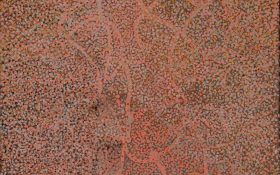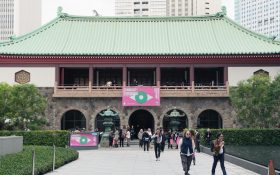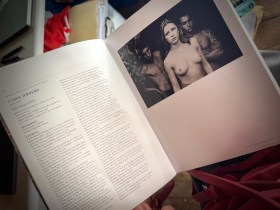We have Lindsay Robertson to thank for this exhibition of 150 photographs taken over four decades by Adams, from the 1920s to the 1960s. Robertson himself is exhibiting some of his own landscape photographs in a corner of the top floor gallery as a kind of appendix to the main show. The exhibition’s sub-title is A Celebration of Genius and this epithet might equally well be directed at Robertson, whose large format images, mostly of the Scottish Highlands, are simply stunning. He was running an informal Q&A masterclass when I visited, holding his audience captive with details of shutter speeds, paper sizes, computer tweaking and the like. The Adams collection is held by George Eastman House International Museum of Photography and Film in Rochester, but Robertson’s position as a resident of the prestigious Hermitage Artists Retreat in Florida put him in a position to angle for the loan. We are grateful.
The photographs are printed in a variety of sizes and, of course, they’re all monochrome. Some of the smaller ones, from his exploration of Yosemite in 1927, appear, in the company of later pieces, to be not much more than tourist snapshots, being traditionally picturesque in composition and lacking in both drama and detail of the later ones. Abstraction creeps into his work from an early date, appearing in 1932. Later images, like the forest close-ups, are more overtly abstract and much more satisfyingl for that. The artistry shines out and, for their time, they must have been truly ground-breaking.
The capture of light effects in Yosemite will be the lasting memory for many visitors to the gallery. These often massive prints command attention and draw the viewer in to examine the sharp detail of mountain, forest and lake, the distant areas partly occluded by etherial cloud, in turn pierced by shafts of sunlight. One such, going under the title Half Dome from Mirror Lake, has all of these qualities, but there’s more. Standing in front of it trying to work out what was different, I eventually discovered that the camera had been tilted by about 10 degrees (I’m guessing) creating a skyline effect that is arguably better than if it had been level. The only problem with this is that all the trees are off plumb by the same amount. I know little about photography but I do know that this annoys me and I couldn’t live with what seems like such a fundamental error. It’s a fabulous picture, but I’d want to reframe it, which means cropping. I hear you crying “Sacriledge!”.
In 1944 some ‘bad’ weather blew in over the Rockies. Winter Storm, Yosemite Valley captures it for posterity and is used as the exhibition’s wow factor, gracing the cover of the info-ticket. Living as I do in a place that knows perpetual gales, I’d do a trade any day of the week for the light mist masquerading as a storm. Looks wonderful. Let’s take a picnic!
This exhibition runs until 19th April and costs £4, standard entry. It’s well worth a detour but beware, you might end up spending rather more than you bargained for. The gallery is, understandably, in subdued light – some would say mirky – and the detail is not always easy to see. That’s a pity because detail is at least half of the allure. Never mind, there’s always the well illustrated book. You did bring your credit card didn’t you?




